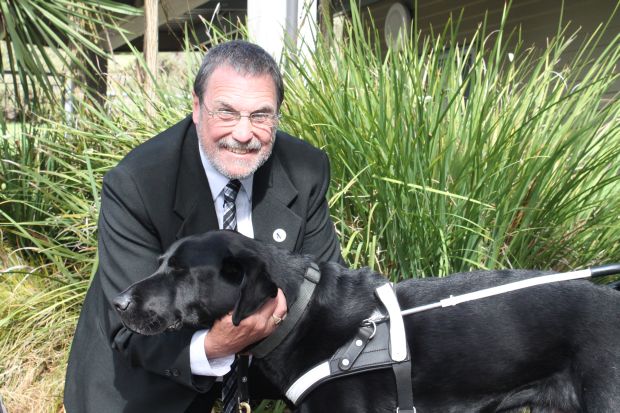
Chris Orr with Riley
When Chris Orr was matched with his first dog, there were only 12 guide dogs working in New Zealand. Now there are about 240. The most common breeds of guide dogs are Labrador retrievers, German shepherds and golden retrievers. But for Chris, a black lab is the only way to go. He can’t bear the thought of getting golden hairs on his dark suits.
Chris has been using a guide dog for 40 years. In that time he has had four. Asides from being black, the other requirements he has of his dogs are that they don’t bark, they’ve been well socialised, they walk fast and that they’re male.
Chris, who works for the Blind Foundation, says some people don’t want a bar of having a guide dog.
“They’re a fiddly mobility aid. You can’t fold them up and put them in your pocket”.
He says around 80 per cent of the Blind Foundation’s clients are over 80 years of age and many of them don’t want a dog. Some low vision clients don’t qualify because their sight is too good. Other people don’t like the way members of the public are happy to talk to the dog but not to them.
Chris says the ratio of guide dogs to blind people is about the same in New Zealand as it is in the United Kingdom and Australia. New Zealand breeds about 120 pups a year but it’s no easy task for them to graduate as a fully-fledged guide dog.
At about 12 months of age puppies undergo six months of intensive training and are assessed on 65 personality and temperament traits, 13 health aspects and 21 guiding tasks. Adult guide dogs work for about eight to ten years before retiring.
It costs tens of thousands of dollars to breed and train a guide dog. Guide dog services, run by the Blind Foundation, relies entirely on donations from the public to fund its programmes.
Chris talks to Carol Stiles about working with the dogs.
Related stories

